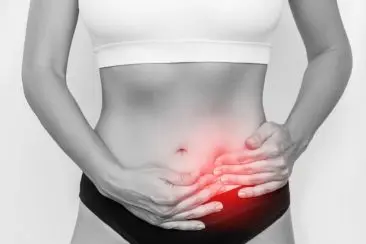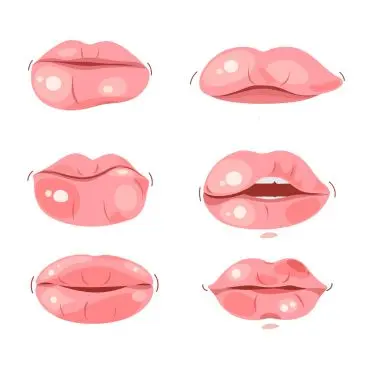Heatstroke VS Sunstroke: Symptoms, Treatment, and Prevention in 2025
A World Health Organisation (WHO) report warns that rising temperatures are a significant health risk. For example, many more homes in the UK are becoming too hot. In 2011, approximately 18% of homes experienced this issue. But by 2022, it had jumped to 80%. Over the last five years, more than 10,000 people in the UK have died from problems linked to heat, like heatstroke or breathing issues.
Cities also feel the heat more than countryside areas. This is because buildings and roads in cities trap heat, making the surrounding areas even warmer. This phenomenon is known as the "urban heat island" effect, and it can be particularly hazardous, especially for older adults and young children.
That's why it's essential to learn about the dangers of extreme heat. This blog will explain the difference between heatstroke and sunstroke treatment in 2025. You'll learn how to spot the symptoms, treat them, and, most importantly, prevent them. With the proper knowledge, we can all stay safer during hot weather.
Heatstroke VS Sunstroke: What's the Difference?
As the weather gets hotter worldwide, more people are falling ill due to excessive heat. Two words often come up when talking about this: heatstroke and sunstroke. But are they the same thing? Let's break it down in a simple way.
What Is Heatstroke?
Heatstroke is a severe illness that occurs when your body becomes too hot and cannot cool itself down. This can happen during extremely hot weather, especially if you are engaging in strenuous physical work or not drinking enough water.
Doctors say heatstroke starts when your body temperature exceeds 40°c, which is dangerously high. You might feel dizzy, confused, or even faint. Sometimes, people stop sweating even though it's hot. Heatstroke is a medical emergency and requires immediate medical attention.
Heatstroke vs. Sunstroke Comparison Table
|
Feature |
Heatstroke |
Sunstroke |
|
Cause |
High temps, exertion, dehydration |
Direct sunlight, no shade or hat |
|
Occurs indoors? |
Yes |
Rarely |
|
Skin condition |
Hot and dry |
Often flushed or sunburned |
|
Immediate fix |
Cooling + hydration |
Get out of sun + cooling + hydration |
What Is Sunstroke?
Sunstroke is a term people often use to describe what happens when someone gets heatstroke after being in the sun for too long. It usually occurs when your head and body are exposed to direct sunlight without shade or protection.
So, what’s the difference between the two?
Are Heatstroke and Sunstroke the Same?
Yes—most doctors today agree that sunstroke is just another name for heatstroke, especially when the sun is the leading cause. In the past, people thought sunstroke only affected the head, but now we know it affects the whole body. In 2025, health experts and the World Health Organisation (WHO) use the term "heatstroke" as the primary term. Some people still use sunstroke, but medically, they mean the same thing.
Due to the increasing frequency of heatwaves and warmer cities, it is crucial to understand the distinction between heatstroke and sunstroke treatment in 2025. Knowing how to spot the signs and treat these conditions early can help save lives.
Recognising the Warning Signs: Symptoms of Heatstroke and Sunstroke
As global temperatures rise, it is crucial to understand the symptoms of heat-related illnesses, such as heatstroke and sunstroke. Both conditions can be life-threatening if left unaddressed.
Common Symptoms Shared by Heatstroke and Sunstroke
Heatstroke and sunstroke often present similar symptoms, including:
- Very high body temperature (over 40°C)
- Headache
- Feeling dizzy or light-headed
- Feeling sick or vomiting
- Fast heartbeat
- Feeling confused or acting strangely
- Passing out or fainting
These symptoms indicate that your body is overheating and cannot cool down. If you or someone else exhibits these signs, seeking help is essential.
Unique Symptoms of Heatstroke
Heatstroke, mainly when not caused by direct sun exposure, may include:
- Hot, dry skin without sweating
- Rapid, shallow breathing
- Seizures
- Coma in severe cases
These symptoms indicate the body's inability to regulate its temperature, potentially damaging vital organs.
Unique Symptoms of Sunstroke
Sunstroke, resulting from prolonged sun exposure, may present with:
- Flushed or red skin
- Throbbing headache
- Intense thirst
- Muscle cramps
These signs indicate the body's response to overheating caused by direct sunlight.
Symptoms in Different Age Groups
- Children may become irritable, lethargic, or experience seizures.
- Adults commonly report dizziness, confusion, or fainting.
- The elderly may not feel thirsty, which can lead to dehydration; symptoms may include weakness, confusion, or fainting.
Real-World Examples from 2024–2025 Heatwaves
In 2024, Japan experienced one of its worst heat waves on record. Over 37,000 people visited the hospital with heat-related illnesses, many of them elderly people without air conditioning.
In Pakistan, the 2024 heatwave reached temperatures of up to 49°c. More than 500 people died, and thousands got sick—most were outdoor workers or the elderly.
These examples illustrate the severity of heatstroke and sunstroke, particularly during extremely hot weather.
You should get emergency help right away if someone:
- Has a body temperature over 40°C
- Seems very confused or is not making sense when talking
- Has a seizure
- Faints or won't wake up
Heatstroke and sunstroke are medical emergencies. Acting fast can save someone’s life.
Why Are More People Getting Heatstroke and Sunstroke in 2025?
In 2025, more people worldwide are falling ill due to the heat. Doctors and scientists say that heatstroke and sunstroke are happening more often than ever before. But why is this happening? There are several reasons, most of which are related to the changing world.
The Earth Is Getting Hotter
One of the biggest reasons is climate change. Over the last few years, the Earth's temperature has been rising—2024 was the hottest year ever recorded. As temperatures rise, we experience more heat waves—periods of extremely hot weather that last for days or even weeks. These heat waves can be hazardous, especially for those who lack access to cooling methods. Experts warn that in the future, heat-related illnesses could cause more deaths than some major diseases if we don't take action now.
Cities Are Hotter Than the Countryside
Another reason is that cities are often hotter than other places. This is due to a phenomenon known as the “urban heat island” effect. Roads, buildings, and pavements in cities absorb heat during the day and retain warmth at night. In some places, one part of the city can be up to 12 degrees hotter than another area. This makes it much harder for people living in cities, especially in poorer neighbourhoods, to stay cool during a heatwave.
Some People Are More at Risk Than Others
Not everyone is affected by the heat in the same way. Older adults and young children are more susceptible to illness because their bodies have a more difficult time regulating body temperature. People with limited financial resources may also be at a higher risk, particularly if they reside in homes without fans or air conditioning. In the UK, 80% of homesbecome too hot during the summer, which is a significant problem for people who cannot afford the necessary repairs.
This year, experts say that heat-related illness is one of the fastest-growing health problems globally. In Europe alone, over 400,000 people were affected by heatwaves and other extreme weather in 2024. If we don’t act quickly, this number will continue to grow.
Heatstroke and Sunstroke Treatment in 2025
Due to rising temperatures, more people will experience heatstroke and sunstroke in 2025. Fortunately, doctors and emergency teams now have more effective ways to treat these heat-related illnesses. Knowing what to do can help save lives, whether at home or in a hospital. In this section, we will examine the differences between heatstroke and sunstroke treatment in 2025, how to assist someone in an emergency, and the new tools being used to keep people safe.
How Doctors Treat Heatstroke in 2025
When someone has heatstroke, doctors try to cool the body down quickly. One of the best ways is to put them in a bath with cold or ice water. This helps lower body temperature quickly. If a tub isn’t available, they may spray the person with cool water and fan them to help dissipate the heat from their body. Ice packs are also used, placed under the arms, on the neck, and between the legs. At the same time, doctors administer fluids through a drip to maintain the person's body's proper functioning.
How Sunstroke Is Treated
Sunstroke is a type of heatstroke that occurs from prolonged exposure to the sun. The treatment is very similar; however, one of the first steps is to remove the person from the sun and place them in a shaded area or a cool room. After that, the same cooling steps are used. That’s one part of the difference between heatstroke and sunstroke treatment in 2025—with sunstroke, sunlight is the leading cause, so shade is significant.
What To Do at Home: First Aid Steps
If someone near you starts showing signs of heatstroke or sunstroke (like confusion, red skin, fast heartbeat, or fainting), here’s what to do:
- Move them to a cool or shady place.
- Take off extra clothing.
- Use cool water or wet cloths to lower their temperature.
- Place cold packs on the neck, armpits, and groin.
- Fan them to help cool their body.
- If they’re awake, give them sips of cool water.
- If they faint or act strangely, call an ambulance right away
How Hospitals Treat It in 2025
Once in the hospital, doctors continue cooling the person down. They may use special blankets or machines to lower body temperature. Fluids are given through a drip, and nurses watch closely to make sure the person’s organs are safe. If the person is severely ill, they may require assistance with breathing or support for their kidneys.
New Technology That Helps
In 2025, technology is making spotting and treating heat illnesses easier. Some of the new tools include:
- Smart Watches and fitness Trackers: These devices can monitor your body temperature, heart rate, and water intake. If something seems wrong, they can warn you or a doctor.
- AI in Hospitals: Computers now assist doctors by providing quick advice on the best course of treatment for a patient based on their symptoms.
- Smart Clothing: Some clothes feature cooling technology and can detect when your body is getting too hot.
Understanding the Difference Between Heatstroke and Sunstroke Treatment in 2025
While both heatstroke and sunstroke are dangerous, there are slight differences in how they are treated. Heatstroke can occur indoors or outdoors, even in the absence of direct sunlight. Sunstroke is directly caused by excessive exposure to the sun. In both cases, cooling the body quickly is most important. The difference between heatstroke and sunstroke treatment in 2025 often starts with where and how the illness began. For sunstroke, moving out of the sun is key. Heatstroke is all about rapid cooling and emergency assistance, regardless of where it occurs.
Knowing what to do and acting fast can save someone’s life. In 2025, we will have better tools and more knowledge than ever before. But your quick action at home can make the most significant difference when every second counts.
How To Prevent Heatstroke and Sunstroke?
As temperatures rise due to climate change, knowing how to stay safe during heat waves is more crucial than ever. In 2025, we will have new tools and strategies to help protect ourselves and others from extreme heat. Let's explore some of these methods.
Staying Safe in Heatwaves
Heatwaves are extended periods of very hot weather. Here’s how to stay safe:
- Stay informed: Follow weather news and heat alerts in your area. Many EU countries now have official heat warning systems.
- Stay cool: Close your curtains during the day to block the sun's rays. Open windows at night when it’s cooler. Use a fan or air cooler if you have one.
- Drink water often: Even if you’re not thirsty, drink lots of water. Avoid fizzy drinks and excessive coffee consumption.
- Wear light clothes: Choose light-coloured, loose clothing.
- Avoid going out during peak heat: Try to stay inside between 11 am and 4 pm, when the temperature is highest.
- Check on others: Call or visit elderly neighbours, friends, or family to make sure they’re okay.
Staying Safe at Work
Some people, like farmers, builders, and delivery workers, work outside in the sun. In 2025, workplaces in many EU countries will follow safety rules during heatwaves:
- Giving workers regular breaks in shaded or cool areas
- Changing work hours so workers avoid the hottest parts of the day
- Making sure everyone has clean drinking water
- Teaching workers how to spot heatstroke and sunstroke
Building Cooler Cities
Cities in Europe are changing the way they are built to fight heat:
- Planting more trees: Trees give shade and help cool the air.
- Green roofs and walls: Some buildings are covered in plants to keep them cooler.
- Using cool materials: New building materials reflect heat instead of absorbing it.
- Creating shaded walkways and public cool spots: Parks, water fountains, and shaded benches are being added in busy areas.
Special Tips for Kids, Schools, and Elderly Homes
- For parents: Keep children inside during the hottest part of the day. Ensure they drink water frequently and wear sun hats.
- For Schools: Teachers can change class times or move lessons indoors. Classrooms should have fans or good airflow.
- For care Homes: Elderly people need help staying cool. Rooms should be kept under 26°C. Staff should check on them frequently, offer water, and assist them in cooling down if necessary.
Easy Summer Safety Checklist
Before the summer heat hits, check these off:
- Make sure fans or air coolers work
- Buy extra water bottles
- Block out heat with curtains or blinds
- Have hats and light clothes ready
- Add shade to balconies or gardens
- Help neighbours who may need support
People across Europe can protect themselves from heat-related illness in 2025 and beyond using these simple tips, tools, and safety plans. Staying safe during heatwaves is all about being prepared, staying calm, and looking out for one another.
Myths About Heatstroke and Sunstroke – What’s True and What’s Not?
There are many rumours and misconceptions about heatstroke and sunstroke. Believing these myths can be dangerous, especially when the weather gets hot. Let's look at some common myths and the truth behind them.
Myth 1: “You only get sunstroke if you’re sunburned
Fact: You don’t need sunburn to get sunstroke.
Even if your skin doesn't turn red, you can still get sick from being in the sun too long. Sunstroke is caused by your body overheating, not by sunburn.
Myth 2: “Only athletes get heatstroke”
Fact: Anyone can get heatstroke.
Athletes are at risk, but so are older adults, young children, and individuals who work outdoors, such as builders or farmers. Even people staying at home can get heatstroke if the temperature indoors is too high.
Myth 3: “Cold water will fix heatstroke”
Fact: Water helps, but it’s not enough.
Drinking water is good, but if someone already has heatstroke, they must be cooled down quickly. Use cold clothes, a fan, or a bath. If they are very sick, call for medical help immediately.
Myth 4: "You always sweat when you have heatstroke."
Fact: Some people stop sweating—and that’s a bad sign.
If someone has dry, hot skin and appears weak or confused, it indicates their body is distressed. They need help fast.
Conclusion: Be Ready for the Heat
The weather is getting hotter more often in 2025, which means more people are at risk of contracting illnesses due to the heat. Heatstroke and sunstroke are severe, but the good news is that they can be prevented if we know what to do.
In this blog, you've learned how to spot the signs of heatstroke and sunstroke. You also learned about the difference between heatstroke and sunstroke treatment in 2025 and what to do in an emergency. We shared easy safety tips, such as drinking water, staying in cool places, using helpful apps, and checking on people needing assistance.
The most important thing to remember is that hot weather can be dangerous, but you can stay safe. Try to avoid going outside during the hottest part of the day. Drink plenty of water and wear lightweight clothing. Ensure that babies, older adults, and anyone working outdoors are also protected.
If someone feels dizzy, confused, very hot, or stops sweating, seek help immediately. Call an ambulance or visit a doctor. And don’t forget to tell your friends and family what you’ve learned. Sharing this could help save someone’s life. Stay cool, stay safe, and help others do the same.






